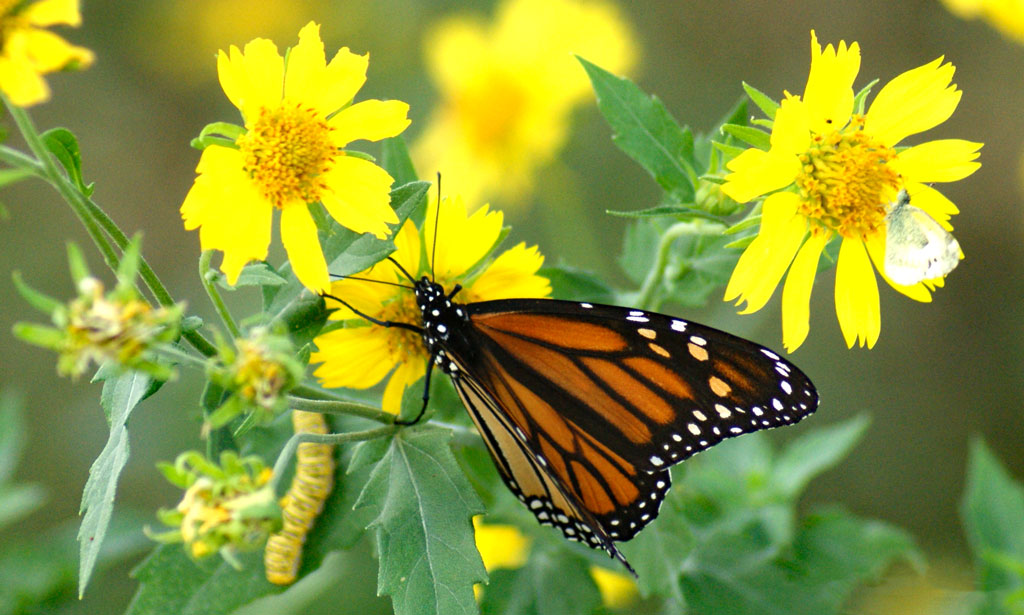Monarch butterflies are on the International Union for Conservation of Nature's Red List, where they were classified as endangered as of July 21, 2022. Texas is a large portion of the monarchs' migration highway. We can help restore our beautiful hardworking pollinator friends. How you may ask?
Monarchs will travel through latitudes 29-31 from Oct. 4-22. In Central Texas, Burnet is at 30.7582°N, Llano at 30.7593°N, Johnson City at 30.2767°N, and Brady at 31.1352°N. For the monarchs' fall arrival, we can help by providing nectar for their long journey, roosting for a rest, and water always.
Plants that offer energy fuel for monarchs are autumn sage, Havana snakeroot (thoroughwort), frostweed, cowpen daisy, aromatic aster, Drummond's aster (Texas aster), willowleaf aster (tall aster), late purple aster (spread-leaf aster), and white heath aster. Plants for larger areas, according to monarchwatch.org, are Texas barometer bush (cenizo), common buttonbush (shrub), and Maximillian sunflower.
Monarchs travel during the day and rest/roost at night. You might look out your door early one morning and see a tree filled with thousands of monarchs, perhaps close to a field or cluster of Maximillian sunflowers. Shhhh! They have a long trip, so let them sleep in.
Several websites to explore for more information on how you can help endangered monarchs include:
Together, we can help the monarch population thrive.
COOL BIRDS!
How do birds stay cool? One way is panting. Yes, birds pant like dogs. Each time the bird breathes out, some of the heat is expelled, leaving the bird feeling cooler.
Birds will also ruffle their feathers, a shake dance. When the feathers are lifted out of place, off of their body momentarily, the breeze can get in and cool their skin.
Siesta time. Birds will also rest during the day to cool down, having the smarts to not expend energy during the heat of the day.
Finally, the ever-popular dip in the pool. Birds love playing in shallow water in bird baths. If your birdbath is deeper than 3 inches, perhaps add some gravel or rocks so the birds have something to wade in on. Songbirds can’t swim like ducks; they need shallow water. Refresh your water often. If you are like us with this heat, it’s not a matter of dumping and replacing stagnant water but keeping the bird bath filled. Remember: Birds don’t have the luxury of stepping inside for a cool reprieve; full bird baths are their cooldown.
Till next time!
Remember the True Master Gardener: Jesus said, “I am the vine; my Father is the Gardener.” John 15:1
"In the Garden" is written by father-daughter duo Bill and Martelle Luedecke and Bill Luedecke. Contact Martelle at 512-769-3179 or luedeckephotography@gmail.com. Contact Bill at 512-577-1463 or bill@texasland.net.
Find more "In the Garden" columns in the Lawn & Garden Guide.

